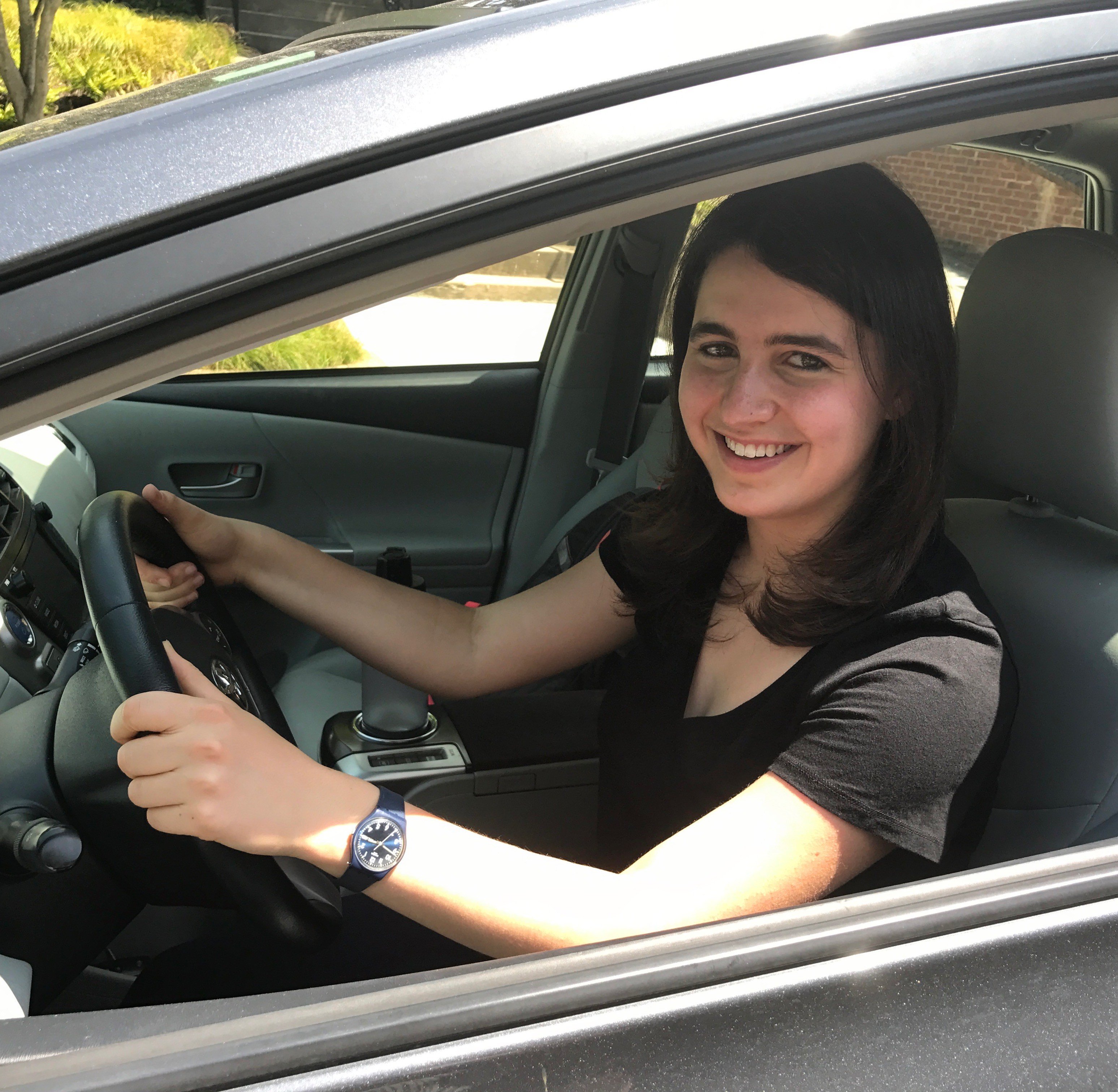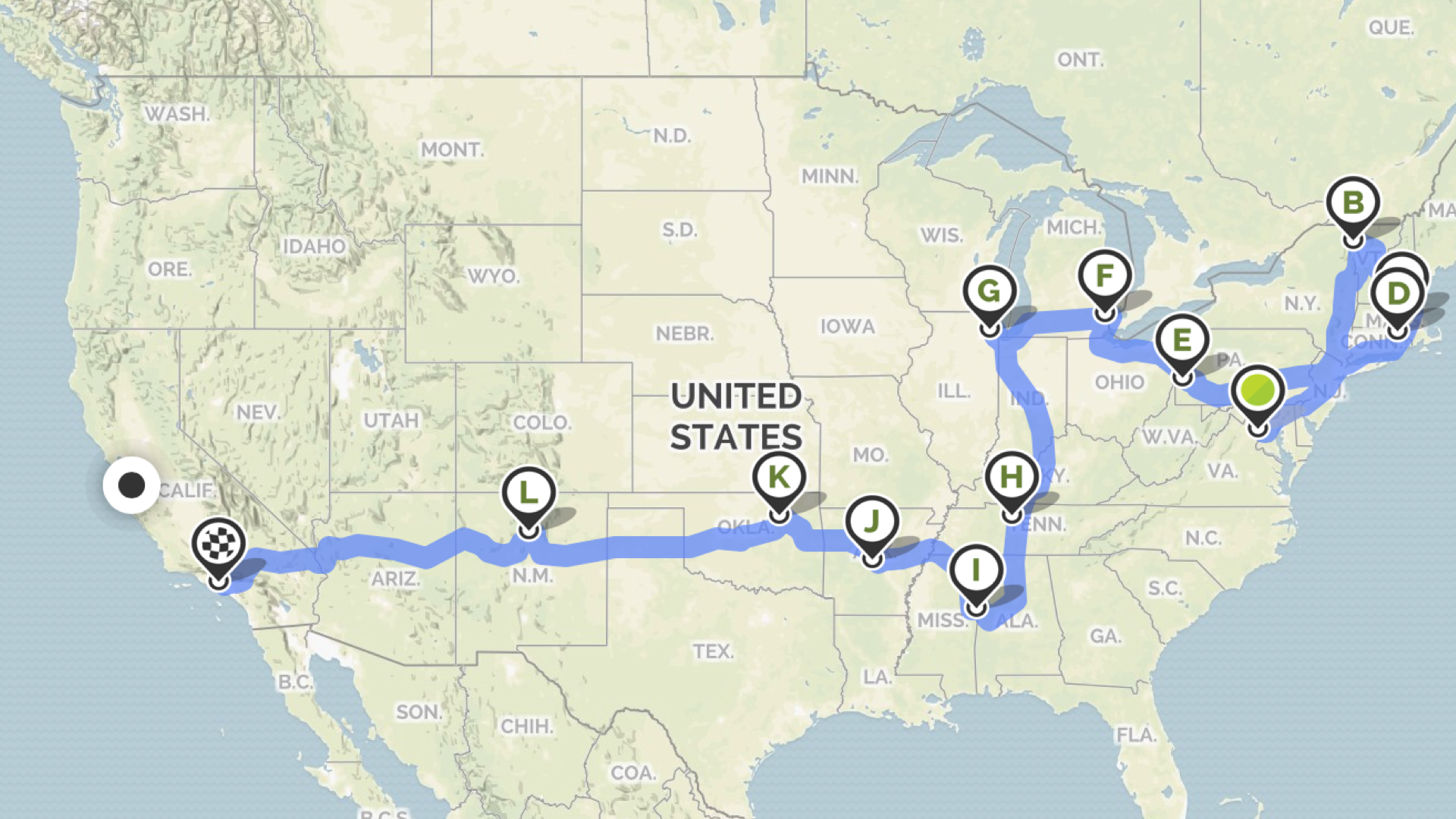This past summer, Sophia Pink ’19 embarked on a solo road trip across the country, asking questions about the hopes and futures of 21-year-olds from all walks of life. Supported by the Chappell-Lougee scholarship and Stanford Speakers Bureau, Pink aims to share her findings to promote the importance of understanding each other’s stories. The Daily took a moment to listen to hers.
The Stanford Daily (TSD): How did you come up with the idea for this research project?
Sophia Pink (SP): Towards the end of 2016, two things happened that surprised me. First of all, we had one of the most divisive elections in U.S. history. Second, I realized that in less than a year, I was going to turn 21. My friends and I were at this weird brink of adulthood where the decisions we make in the next few years might actually have a big effect on our lives and others’ lives. I was curious: How are other 21-year-olds thinking about the future of the U.S. and of their own lives?
TSD: Why 21 year-olds?

SP: One reason is that I was going to turn 21 at the end of the year, so I thought it’d be interesting to talk to people who were a tiny bit older than me. We often think of 18 as the age when people become adults, but I think things are shifting a little bit. At the age of 21, people are attending community colleges, four-year colleges, graduating or figuring out their next steps. People in the workforce have been there for a couple years but are still in the transition phase. I think age 21 is an inflection point no matter where you are.
TSD: What was your biggest fear or challenge about the project?
SP: I like working on long-term projects that give you something at the end and figuring out the necessary skills to complete it, but one of my fears was that I wouldn’t find enough people to talk to. The overarching fear is that you put all this work into something, and you don’t find anything interesting. I don’t think that happened though.
TSD: How did you decide on the locations?
SP: I mapped out a general route, where I would hit different regions of the country — East Coast, Midwest, South and West Coast — but I took some detours along the way. Exact locations were dependent on where I could find people to interview. I started the trip with the first few weeks carefully planned out, but it came to the point of planning in which state I was going to be immediately beforehand.
TSD: How did you find interviewees?
SP: Though I don’t have journalistic background, I took a journalistic approach to find people, meaning however I could. I used three main methods. First, I reached out through a network of friends of friends. Second, I reached out to sponsors or community leaders, including baseball coaches, pastors and student group leaders. Third, I did a lot of cold-emailing, especially by looking at local news articles or community college bulletins for people who were quoted and reaching out to them. Finding interviewees was definitely a big chunk of the project. I was constantly trying to source the interviews and trying different leads to get people to say yes.
TSD: How did your studies in Product Design contribute to this project?
SP: In the Product Design major, we do a lot of what the Design School calls “need-finding.” Before designing a product, you talk to people, watch them and ask questions, trying to understand where they’re coming from and what they’re about. That training helped me in interviewing people. Also, in Product Design, you identify a need, but for this project, I wasn’t trying to identify a need. I wanted to understand how these people think about the future.
TSD: Were certain types of people more open to talking?
SP: Because I scheduled all the interviews ahead of time, I only interviewed people who were willing to talk to me. At the beginning, I tried approaching people spontaneously, but it didn’t work that well because my questions require some thought. It’s hard to interrupt someone who’s waiting in line and ask, “What’s your biggest fear?”
TSD: How did you respond to views with which you disagreed?
SP: For this project, I decided to remain neutral. I wouldn’t argue with people; I would just listen. When I heard something with which I disagreed, I asked the person more about it and tried to see from where they were coming. Those ended up being some of the more interesting interviews.
TSD: Were there regional trends?
SP: Political regional trends are what you’d expect. Younger people tend to lean more liberal, so my interviews leaned more liberal as a whole. In terms of other trends, I didn’t interview enough people to say much, but I think one of the biggest differences in how people were approaching life was less about regional differences and more about whether people were in or out of college. The types of things that college students and people with jobs worry about are different. For example, college students’ worries were broader and more open, and anything could happen in their future. People in the workforce had specific, day-to-day worries.
TSD: What themes did you find?
SP: First was the “optimism gap.” I asked, “When you think of your own future, what’s the first word that comes to mind?” Overall, answers were positive. Then I asked, “When you think about America’s future, what’s the first word that comes to mind?” I got a whole bunch of answers: “dumpster fire,” “disaster” and my favorite, “Oh honey.” For whatever reason, we feel great about our own lives, but once we zoom out far enough, we lose that optimism. Second, we assume people fear change. But I found that many 21 year-olds feared stagnancy. I thought that was super interesting. It may be a generational difference. If you look back on the last 21 years, so many changes have happened. Since 1996, there are 1.7 billion more people on the planet now than in 1996. We’re used to change so it makes sense that we fear stagnancy more than change.
Lastly, I’m sure you’ve seen articles about millennials — the narcissistic “me” generation. I asked 21-year-olds, “What would make a meaningful life to you?” I thought people would say, “A good career, comfort or happiness.” But no matter where I went in the country and whom I interviewed, I heard the same phrase repeatedly: “Before I die, I want to make a mark on the world.” That struck me. The only tension was how wide their circles could be. Some want to empower as many people as they possibly can; some want to form a couple close friendships. One woman said, “I was taught and dreamed as a kid to help 100,000 people, but as I’ve gotten older, that’s not as important as helping the people who are five feet away from you.”
That stuck out to me, because I started this summer worried about America’s future, and I decided to do this project in which I drive 6,000 miles and pass by more than 100,000 people. But I spent most of my time five feet away from people, having conversations. Overtime, my optimism gap began to close, and by the end of the summer, I felt hopeful and excited for America.
TSD: On that note, what are your biggest hopes and fears?
SP: Based on this project, my biggest hope is that people keep talking to each other and improve things. It’s broad, but as I talked to more and more people, they wanted to work hard, do something that matters and keep connecting to others. It’s often easy to forget those basic human qualities. My biggest fear is similar to the most frequent concern of the 21-year-olds, which is “Do I matter?” To make our lives matter, we want to make an impact and make one person’s life a little better. Given the opportunities I have, including Stanford, I still fear that I won’t end up doing that. But we’ll see.
TSD: What would you like people to take away from America at 21?
SP: One way to begin to shrink the optimism gap is to have conversations with people. Talk to friends, and ask them these big questions, or during Thanksgiving, go up to that weird uncle, and see where he’s coming from. If 100,000 people seems daunting, focus on the people five feet away from you, and that can have a ripple effect outwards.
Contact Elaine Park at elainep ‘at’ stanford.edu.
